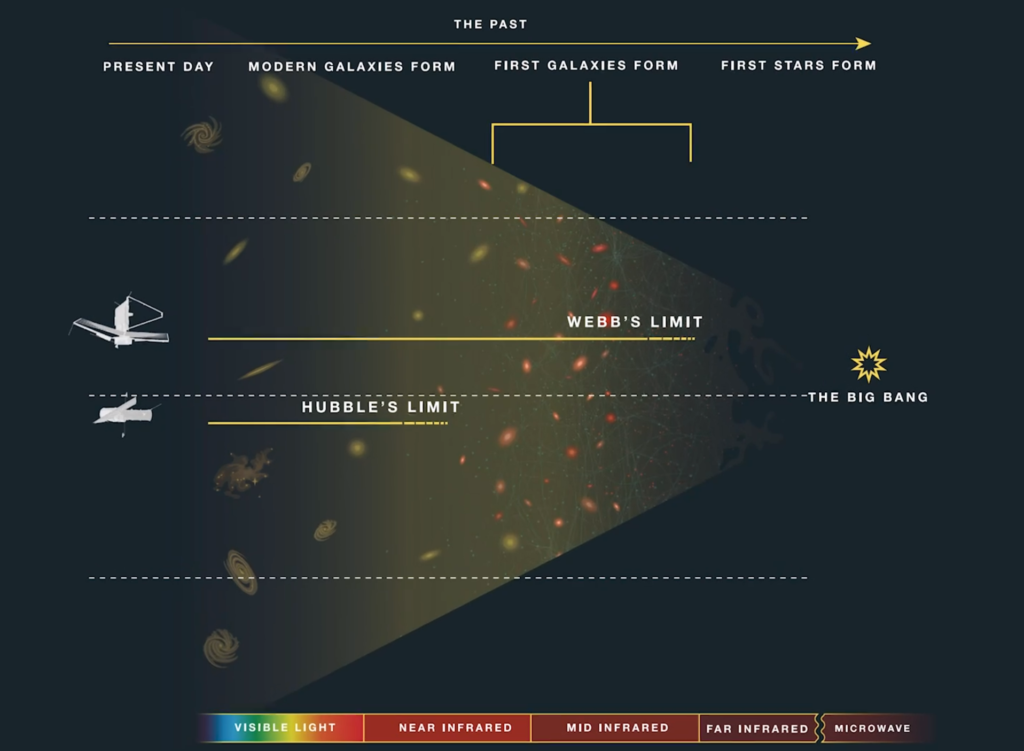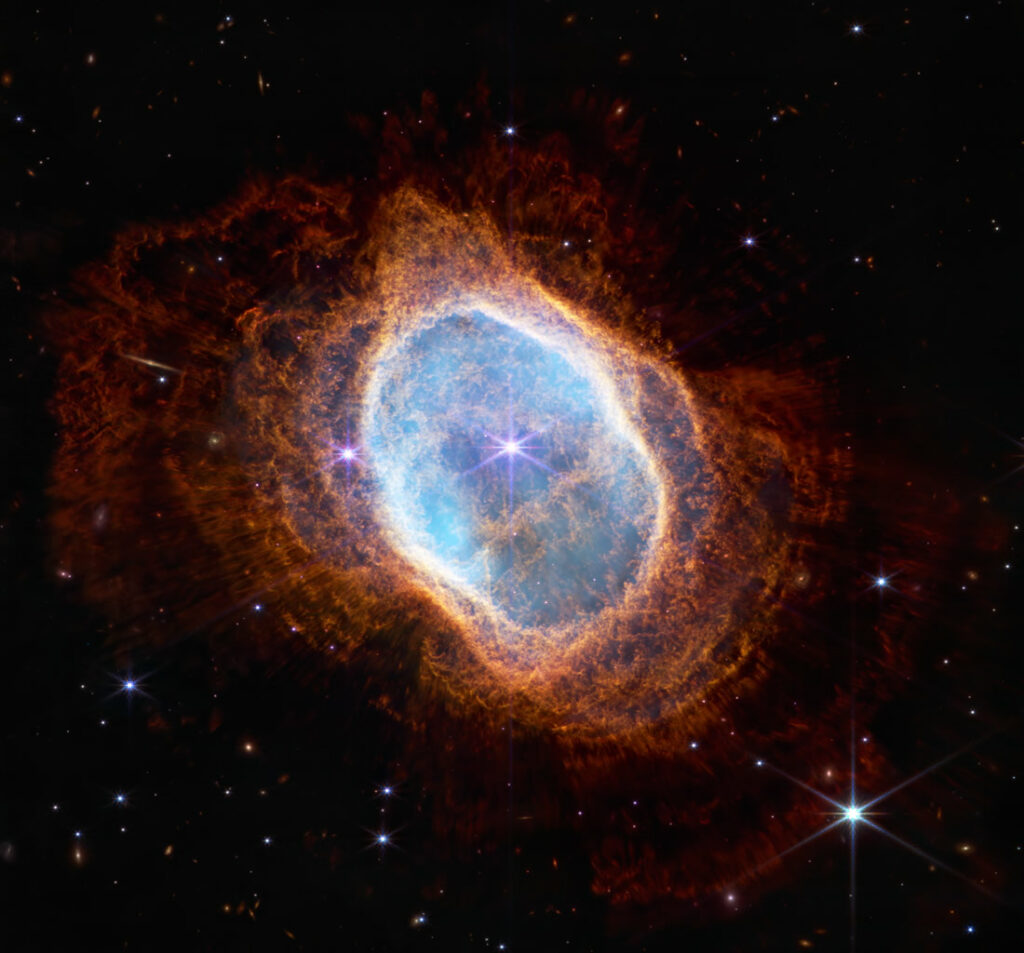The fantastic images of NASA’s James Webb Space Telescope (JWST) are of great interest in scientific and technical circles – but also among the broader audience. The first impressive pictures arrived on July 12 and we can only guess how many interesting photos will follow them in the next 5-10 years.
What makes these shots so breathtaking? What are the main developments, and what are the technological innovations of the James Webb Space Telescope compared to its most famous predecessor, the Hubble Telescope launched in 1990?
The expedition, managed by NASA in cooperation with the European Space Agency (ESA) and the Canadian partner organization (CSA), set off on December 25, 2021, from the ESA space station in French Guiana. The construction and launching of the James Webb were significantly inspired by the success of its predecessor, the Hubble telescope, but fundamental changes were made, the results of which are convincingly illustrated by the already published images.
The space telescope, named after NASA’s second director, mainly photographs the infrared range, while Hubble primarly scans the visible range. By sensing the infrared region, which is invisible to the naked eye, stars and planets that are currently forming and are covered in visible light-absorbing dust can be observed, and the wavelength of light coming from very far away can also change and shift to the infrared range.
The difference in the size of the mirrors of the 2 telescopes also contributes to the knowledge of previously unseen segments of the universe. The size of the mirror primarily affects the amount of captured light, which allows the James Webb Space Telescope, which has a much larger mirror, to see much better “backward” in time. It takes a long time for the light of distant objects to reach the telescope, so what we see in the images may even be evidence of events billions of years ago, for example, star formations around the time of the Big Bang 4.6 billion years ago can also be researched. The mirror of the new telescope consists of 18 hexagonal, gold-coated pieces and has a total diameter of 6.5 meters, i.e. the useful, light-receiving surface is approx. 25.4 square meters. The diameter of Hubble’s mirror, on the other hand, is only 2.4 meters with a surface area of 4.5 square meters.

In addition to size, the position also matters: while Hubble orbits the Earth 570 kilometers from us, James Webb orbits the Sun together with the Earth, one and a half million kilometers away, about four times as far from Earth as the Moon’s orbit, at the so-called Lagrange 2 point. As a result, its orbital period is much longer, so it has more time to observe and map each point in space. The Lagrange 2 point is one of the 5 points in outer space where the gravitation of the Sun, the Earth, and the Moon equalizes, and the object placed here remains relatively stable.
Although Hubble is still operating 32 years after its launch, the planned project duration of JWST is about 5-10 years, thanks to the huge distance and the fact that it is not eligible to take astronauts even for troubleshooting purposes. The parameters of the James Webb space telescope allow it to photograph the birth of the very first galaxies and the appearance of the first stars, while the Hubble can only report on the “infant galaxies” due to its smaller mirror size and cameras that only partially look into the infrared range.
Some of the first images can be compared with images taken by Hubble of the same object. In 1998, Hubble took a beautiful, mysterious image of the planetary nebula NGC 3132. James Webb’s images show that the nebular system has two central stars and that one of them has been sending out rings of gas and dust for thousands of years, making it one of the best documentations of a dying star to date.

Observing the infrared range still holds many secrets, it may even revolutionize our existing knowledge and provide answers to many theories that have not been proven so far. We can expect an immeasurable amount of data to be processed and published in the upcoming years, since in addition to the two instruments that create the images – NIRCam, which monitors the near-visible infrared range, and the MIRI camera, which scan higher wavelengths, the mid-infrared region – another important instrument is the NIRSpec, that among other things, analyzing the material composition and also measures the temperature. The FGS/NIRISS instrument, consisting of two modules, enables precise pointing when taking high-resolution images and also examines lights and exoplanets.
Another condition for photographing planets and galaxies is a detector that allows a very long exposure time, for which the best solution – also used on JWST – is the so-called CCD (charge-coupled device). The chain of components for transmitting signals, supplemented with a light-sensitive module and a photodiode, converts light into electronic signals. Its peculiarity is that it contains an integrated circuit consisting of capacitors connected, and since the capacitors can transfer the electric charge to their neighbors, the image can be read even with a long exposure. The creators of the technology, Willard Boyle and George Smith, were awarded the Nobel Prize in Physics in 2009, 40 years after its discovery in 1969.
In addition to space research, the same technology is primarily used in digital cameras and optical scanners. The CMOS technology, which works on the same principle, serves the cameras of smartphones as well as satellites that monitor the Earth.
High-resolution images from satellites provide a wealth of data in a wide variety of fields. E-Group mainly focuses on Earth-facing objects, satellites and navigation systems, but at the same time looks for additional innovative approaches in drug research and communication protocols. In the current research work, we utilize Galileo satellite’s advanced and unique cryptographic functionality. We offer data-based collaboration models for many industries that can also use satellite data. Whether it is the prediction of climatic and soil conditions, exact location or the analysis of the average yield of individual crops in agriculture, data that can be used in the construction industry or even in the fields of national defense or disaster management.


